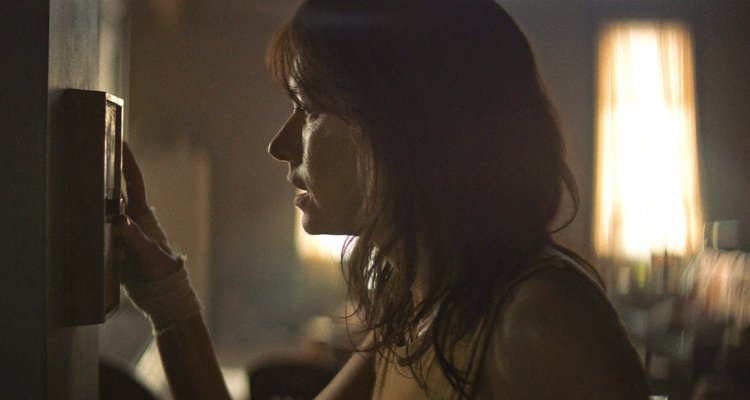“The Wolf Hour” begins with a big, tight close-up of Naomi Watts’ face, and proceeds with the same sense of scrutiny. She’s in every scene of this character study— in nearly every shot, in fact—and delivers a performance of such raw nerve, you understand how writer/director Alistair Banks Griffin figured he could hang the entire picture on it. That’s a big risk, and he almost pulls it off. But ‘Wolf Hour’ keeps missing that moment when it all snaps into place, where the narrative satisfyingly matches the intensity of the style or the immediacy of Watts’ work. And then, when it finally does, the movie’s over.
READ MORE: Sundance 2019 Film Festival Preview: 25 Must-See Films
The setting is one of the most evocative in recent history: New York in the summer of 1977. The city is sweltering under a heat wave, crime is sky-high, and the “.44 Caliber Killer” (later rechristened with his preferred moniker, “Son of Sam”) is all over the news. That itchy, scary summer would culminate in a twenty-four-hour citywide blackout that saw thousands of fires, lootings, injuries, and arrests.
READ MORE: The 100 Most Anticipated Films Of 2019
June Leigh (Watts) is having a rough enough time before any of that even begins. Living— initially temporarily—in her late grandmother’s apartment in a run-down South Bronx walk-up, she suffers from a severe case of agoraphobia; she hasn’t walked through the front door in weeks, maybe months. She’s a novelist, and her debut book was a counterculture sensation, but with ramifications, she didn’t predict. “If I stay in here, I won’t do any more damage out there,” she explains.
READ MORE: The Most Anticipated Films By Female Filmmakers In 2019
There’s a sense, particularly in the evocative early passages, that the apartment itself is contributing to her condition—scary sounds through the intercom, creaky floorboards outside her door, that kind of thing. Inside, she’s surrounded by stacks of forgotten books, piles of old newspapers, and trash that she can’t bring herself to haul downstairs. And someone keeps ringing her buzzer, repeatedly and incessantly, at all hours, trying, she insists, to drive her crazy (the ace sound design really gives those buzzers the full jolt.)
READ MORE: The 25 Best Films Of 2019 We’ve Already Seen
Through the bulk of the picture—put plainly, the 90 minutes before the sky fills with the thunder and lightning that hasten the blackout—Griffin goes all in on paranoia and claustrophobia, putting the momentum of the movie squarely on Watts’ shoulders. And she does her best to deliver, as do the occasional supporting players who come into her orbit; Jennifer Ehle is especially excellent as her visiting sister, a role that capitalizes on her peerless ability to convey everything while saying nothing. Watts, meanwhile, wears her depression and fear like a second skin—but one she can shed, like in a moment of laughter and abandon with Ehle, or her guttural dancing to a punk track on the radio.
READ MORE: 18 Sundance Film Festival 2019 Premieres That Already Have Our Attention
But Griffin’s screenplay seems unfocused and uncertain. It’s a film that demands a good deal of patience (quite a few people in my screening weren’t willing to indulge) and flirts with spells of outright boredom. When you take this long with the wind-up, you’d better deliver a killer pitch, and sooner than we see here — which is a shame, because this time and place is so ripe for dramatization, and when the long-awaited blackout finally arrives, the imagery in the streets is so striking, and the replication of the time and place so convincing, it feels like a loss to have taken so long to get there. [C]
Check out all our coverage from the 2019 Sundance Film Festival here.

